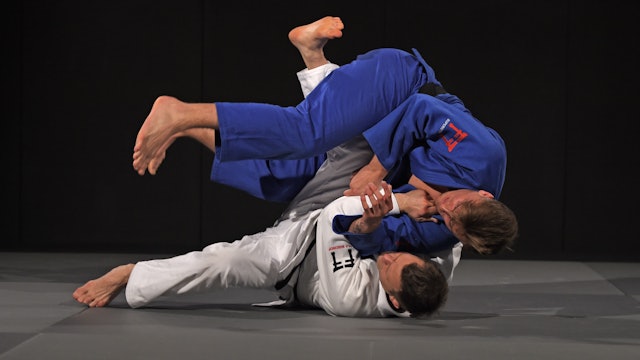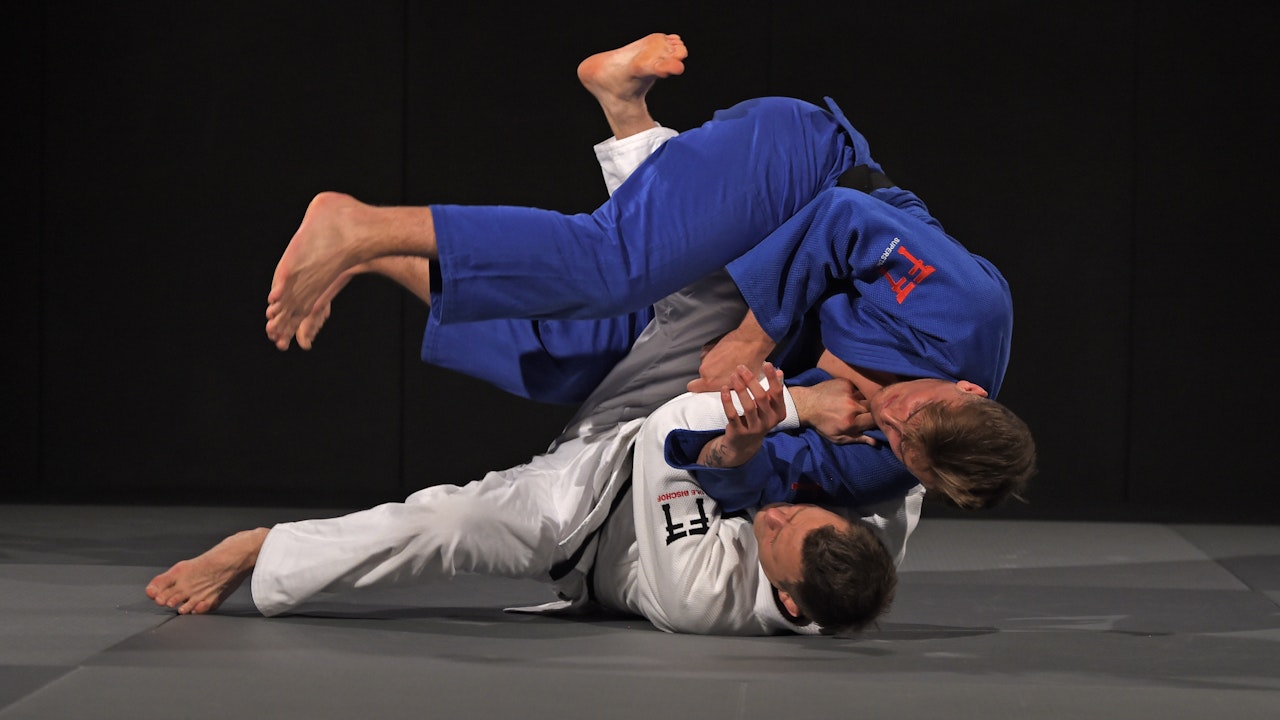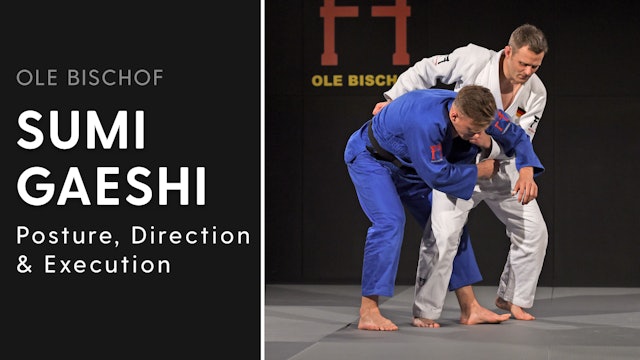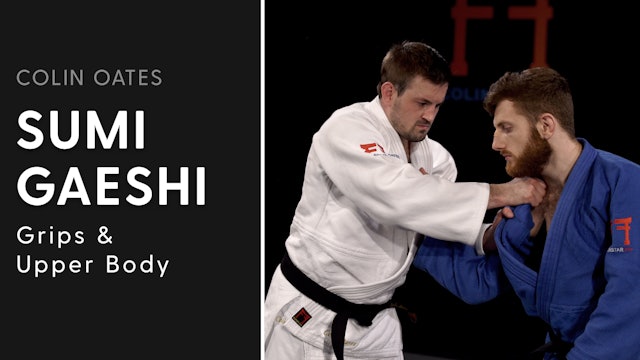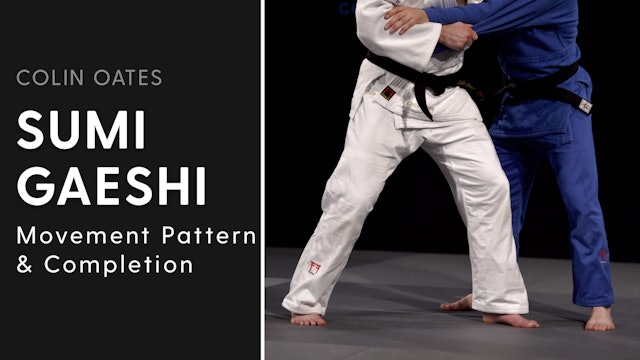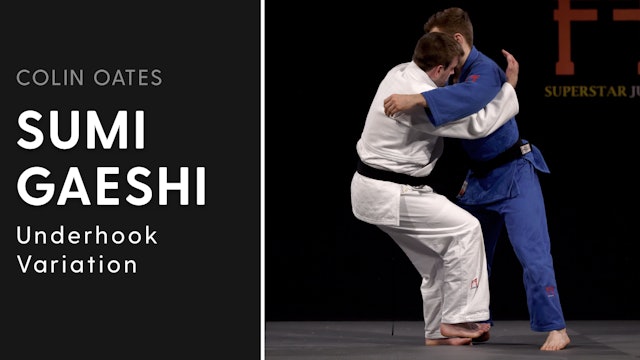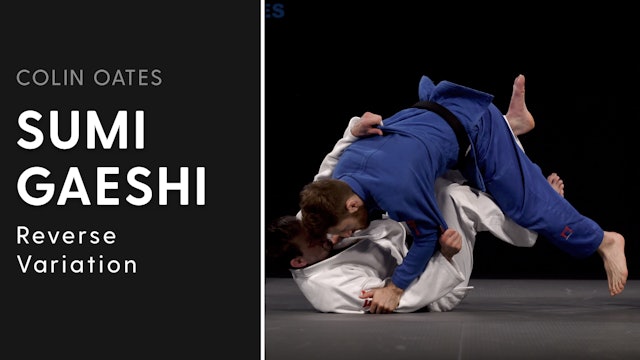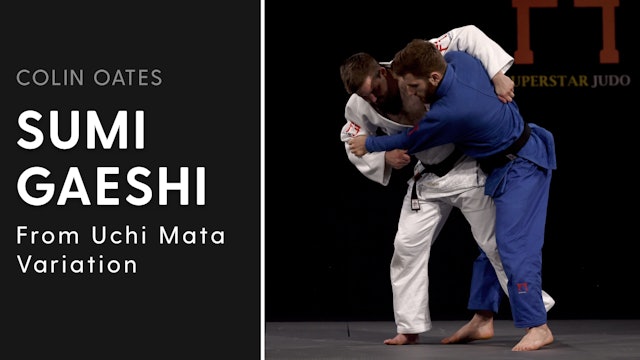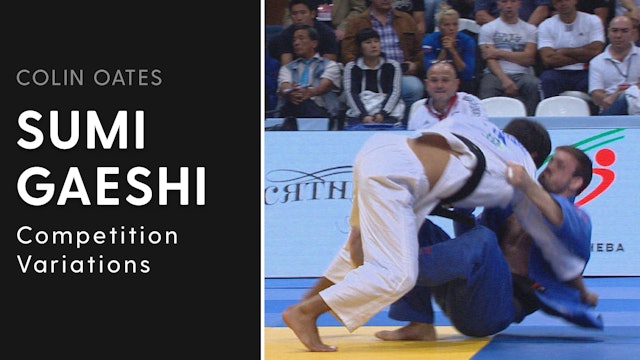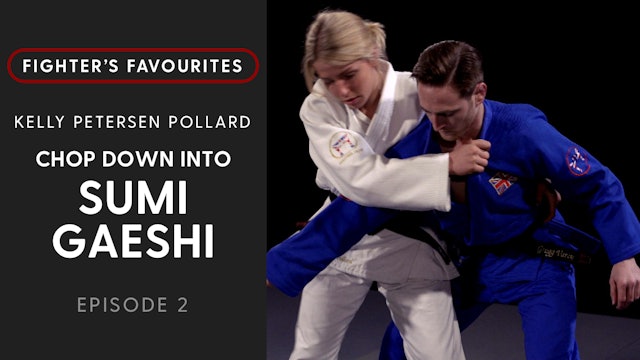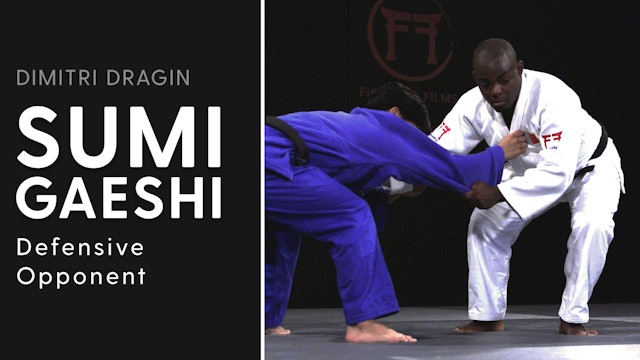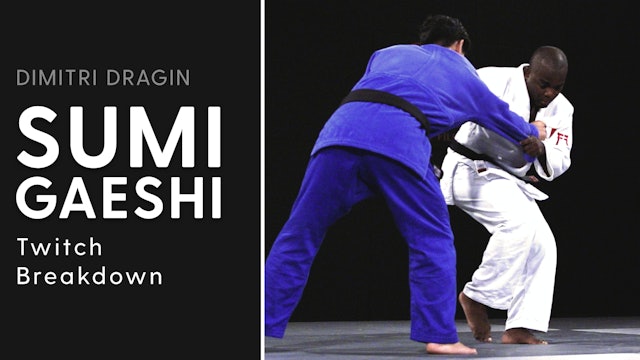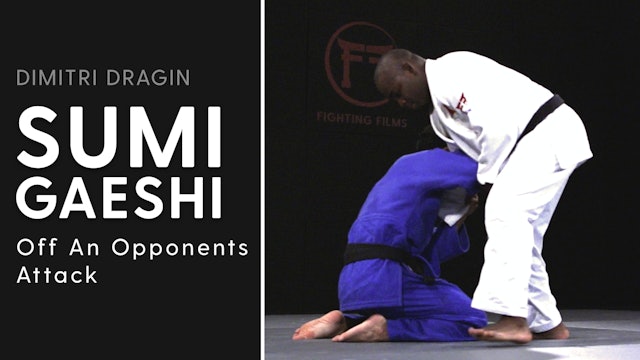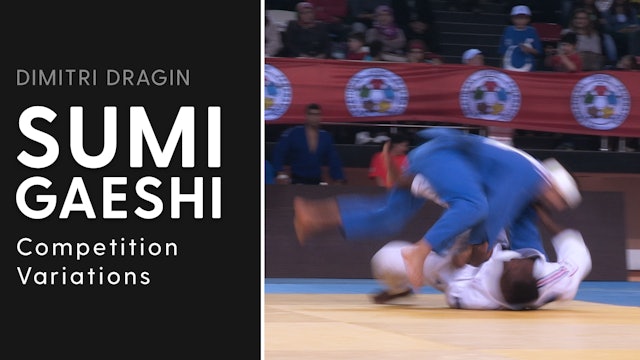Sumi Gaeshi
7 Seasons
Multiple World and European medalist Euan Burton offers a great introduction to classic Sumi gaeshi, before coaching three separate variations he used at the international level.
Olympic Champion Ole Bischof, meanwhile, breaks down his version of Sumi gaeshi into posture, direction and execution.
Multiple European Medallist Colin Oates rounds out the sumi gaeshi section with his mastercalss in sumi gaeshi.
-
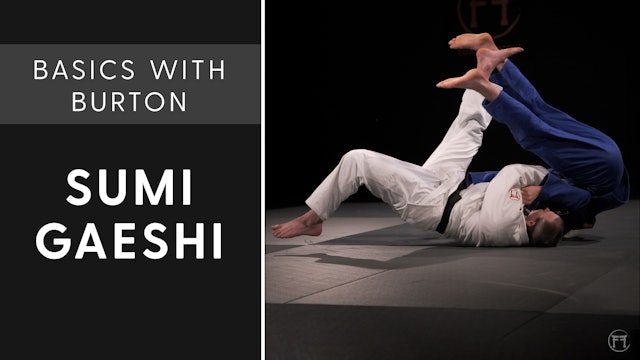 09:27Episode 1
09:27Episode 1Sumi Gaeshi | Basics With Burton
Episode 1
Euan Burton takes you through the basics of sumi gaeshi
-
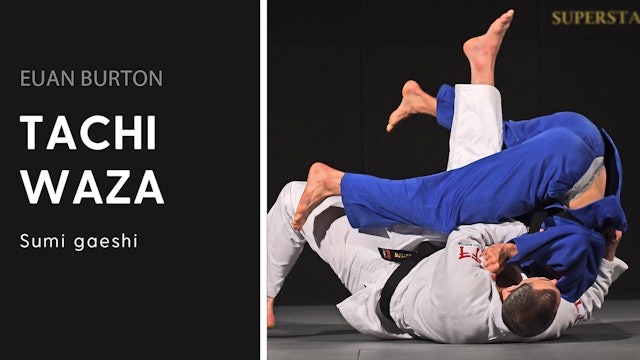 02:58Episode 2
02:58Episode 2Sumi gaeshi | Euan Burton
Episode 2
A right handed fighter, Burton’s Sumi gaeshi comes from a left handed lapel grip, with his right hand taking a cross lapel grip.
-
 01:20Episode 3
01:20Episode 3Arm wrap Sumi gaeshi | Euan Burton
Episode 3
Burton’s arm wrap variation of Sumi gaeshi perfectly complements his forwards Makikomi techniques.
-
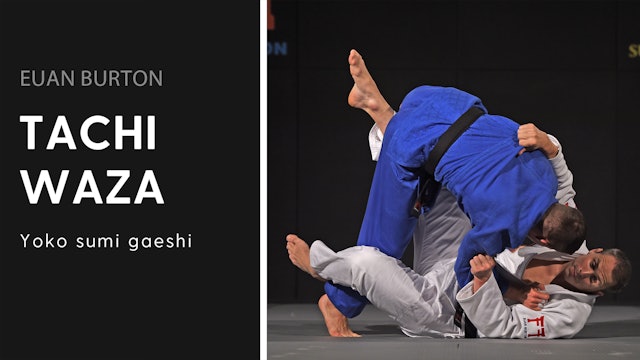 01:43Episode 4
01:43Episode 4Yoko sumi gaeshi | Euan Burton
Episode 4
Burton has a very unusual Yoko sumi gaeshi, which he uses when his opponent tries to defend his standard Sumi gaeshi.
-
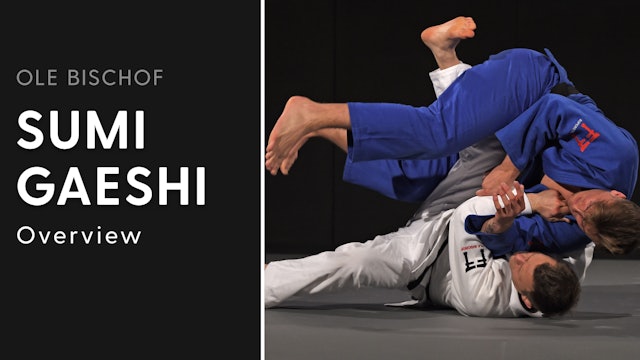 02:06Episode 5
02:06Episode 5Overview | Sumi Gaeshi | Ole Bischof
Episode 5
Olympic Champion Ole Bischof shows his Sumi gaeshi. This video is part 1 of 2.
-
Sumi gaeshi - Posture, direction & execution | Ole Bischof
Episode 6
Olympic Champion Ole Bischof shows the posture, direction and execution for his Sumi gaeshi. This video is part 2 of 2.
-
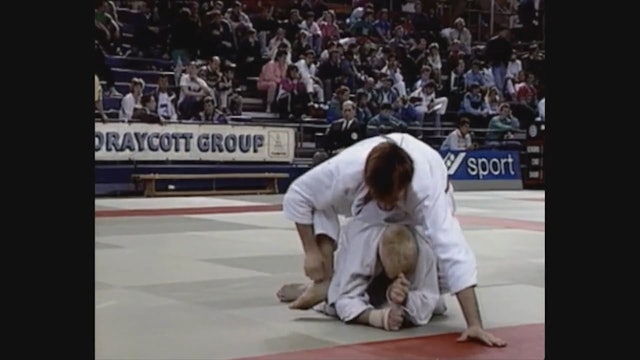 01:50Episode 7
01:50Episode 7The Gokyo - Sumi gaeshi
Episode 7
The Gokyo version of Sumi gaeshi, demonstrated by Neil Adams.
-
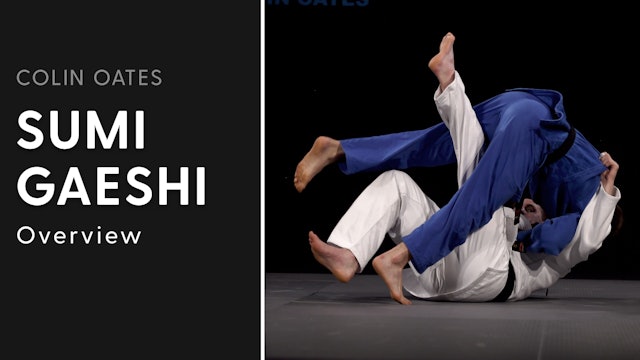 02:16Episode 8
02:16Episode 8Overview | Sumi Gaeshi | Colin Oates
Episode 8
Multiple European Medallist Colin Oates is best known for his Sumi gaeshi - it was the technique he scored with most, and he had a total of four variations.
Throughout his entire competitive career, Oates was tweaking, improving and adding different elements to his Sumi gaeshi. There were three ...
-
Grips & Upper Body | Sumi Gaeshi | Colin Oates
Episode 9
Colin Oates, a left-handed fighter, uses Sumi gaeshi against right-handed opposition. For Oates’s Sumi gaeshi to be most effective both judoka need to be fully gripped up. So, he is quite happy to allow his partner to take the first grip on his jacket.
He then feeds his partner’s lapel into his ...
-
Movement Pattern & Completion | Sumi Gaeshi | Colin Oates
Episode 10
Colin Oates regards his foot movement pattern as the single most important element to his Sumi gaeshi. He learnt this pattern from his Japanese coach, Go Tsunoda, which is traditionally used to set up the big forward or rear throws. Oates, however, managed to successfully incorporate it into Sumi...
-
Underhook Variation | Sumi Gaeshi | Colin Oates
Episode 11
Colin Oates’s underhook variation of Sumi gaeshi comes from when neither judoka has a sleeve grip. This technique evolved when Oates was chasing his opponent for the sleeve, but they were fighting hard not to give it up. As a result, momentum comes into play even more so than his standard variati...
-
Reverse Variation | Sumi Gaeshi | Colin Oates
Episode 12
Colin Oates has an unusual reverse Sumi gaeshi, which perfectly compliments his standard variation of the technique. He learnt the reverse Sumi gaeshi from French World Champion Stephane Traineau early on in his career. However, he only incorporated into his judo several years later, but now cons...
-
Uchi Mata Variation | Sumi Gaeshi | Colin Oates
Episode 13
As with all of Colin Oates’s Sumi gaeshis, momentum is absolutely critical and it’s no different when it comes to his Uchi mata – Sumi gaeshi combination. Oates pre-plans this combination against opponents who are defensively strong against his Uchi mata.
The Uchi mata, however, must come with ...
-
Competition Variations | Sumi Gaeshi | Colin Oates
Episode 14
In this clip we look at how Colin Oates used his Sumi gaeshi at the world’s biggest competitions.
At the 2011 Qingdao Grand Prix Oates uses a belt grip to score Yuko and win in Golden Score.
On his way to winning the bronze medal at the 2014 Samsun Grand Prix Oates grips deep over his opponent’...
-
Chop Down Into Sumi Gaeshi | Kelly Petersen Pollard | Fighter's Favourites
Episode 15
Kelly Petersen Pollard shows you her chop down into sumi gaeshi
-
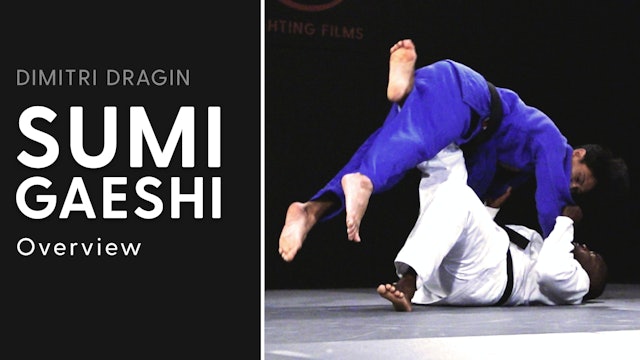 01:49Episode 16
01:49Episode 16Overview | Sumi Gaeshi | Dimitri Dragin
Episode 16
Dimitri Dragin’s Sumi Gaeshi is executed in a right vs right scenario, where both fighters have a traditional grip of sleeve and lapel
He has 2 main variations
The first is his twitch set up variation. Dragin uses this when the opponent is in a more upright position.
The twitch is used to get...
-
Defensive Opponent | Sumi Gaeshi | Dimitri Dragin
Episode 17
Dimitri Dragin says executing Sumi Gaeshi on an opponent in a defensive posture bares many similarities to his standard Sumi Gaeshi.
The arms start the same, right hand relaxed on the lapel, and left hand pulling on the sleeve, it’s the posture of his opponent that is the key difference, requiri...
-
Twitch Break Down | Sumi Gaeshi | Dimitri Dragin
Episode 18
Dimitri Dragin executes his Sumi Geashi off a traditional sleeve and lapel grip.
Although it’s a right v right scenario, Dragin prefers for Uke to be upright, in a more square position, while having himself at a more side-on angle.
Dragin makes sure that he keeps his right arm relaxed on the l...
-
Off An Opponents Attack | Sumi Gaeshi | Dimitri Dragin
Episode 19
During his career Dragin found that he could have success with Sumi gaeshi when using it as a response to an opponents failed attack.
It worked particularly well off a Drop Seoi Nage attempt, or any failed attack where they ended up on their knees, like Ouchi gari.
Thanks to Dragin’s quick reac...
-
Competition Variations | Sumi Gaeshi | Dimitri Dragin
Episode 20
Now let’s take a look and analyse how Dragin executed his different Sumi Gaeshi variations at the World’s biggest tournaments.
Up against Millar of Great Britain at the 2009 Paris Grand Slam, Dragin circles around disrupting his opponents balance, then attacks with his Sumi Gaeshi.
The circle D...

